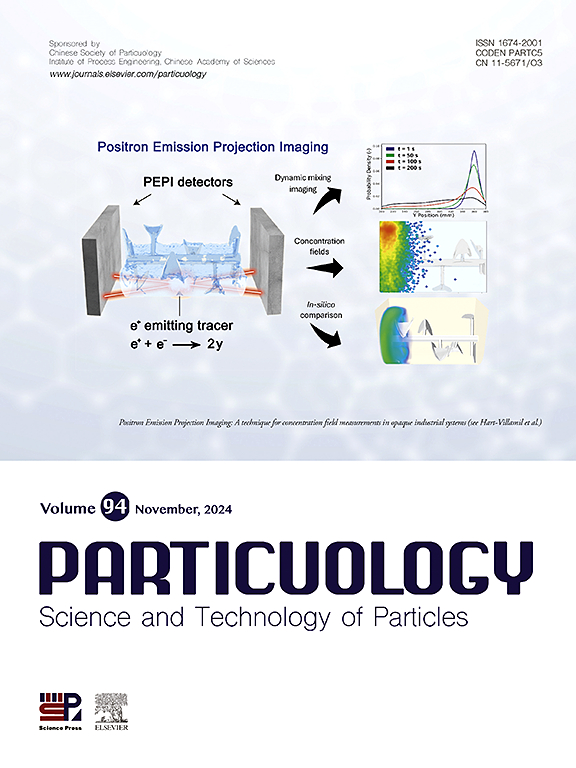Supercritical CO2-mediated strategy for structural engineering of photocatalysts and electrocatalysts: Mechanisms and applications
IF 4.1
2区 材料科学
Q2 ENGINEERING, CHEMICAL
引用次数: 0
Abstract
Under the driving force of the “carbon cycle” goals, achieving efficient synthesis and precise functional regulation of catalytic materials while simultaneously addressing CO2 resource utilization and environmental friendliness has become a central challenge in the fields of energy catalysis and pollution control. Traditional synthesis methods often face issues such as insufficient precision in microstructure regulation, high energy consumption in processes, and solvent pollution, while the inadequate exposure of active sites and low mass transfer efficiency of CO2 conversion catalysts further hinder their large-scale application. In response to these challenges, supercritical carbon dioxide (sc-CO2) technology, leveraging its unique physicochemical properties and green process characteristics, offers an innovative solution for the multi-scale structural design and performance optimization of catalytic materials. This review systematically analyzes the mechanisms by which sc-CO2 technology regulates micro/nano structures (e.g., defect engineering, hierarchical pore construction), modifies active sites (e.g., heteroatom doping), and enhances reaction kinetics in the synthesis of photo/electrocatalysts, revealing its key role in improving CO2 reduction efficiency, pollutant degradation rates, and sensor sensitivity. Furthermore, it highlights that, future advancements in machine learning-driven process optimization, single-atom catalyst design, and reactor fluid dynamics innovation can overcome current limitations such as sensitivity to pressure-temperature conditions and insufficient material stability. This review provides a theoretical framework for developing sc-CO2 synthesis technologies that combine atomic-level precision control with industrial feasibility, thereby advancing clean energy conversion and low-carbon manufacturing.

光催化剂和电催化剂结构工程的超临界co2介导策略:机理和应用
在“碳循环”目标的推动下,实现催化材料的高效合成和精准功能调控,同时解决CO2资源利用和环境友好问题,已成为能源催化和污染控制领域的核心挑战。传统的合成方法往往面临微观结构调节精度不够、过程能耗高、溶剂污染等问题,而CO2转化催化剂活性位点暴露不足、传质效率低,进一步阻碍了其大规模应用。为了应对这些挑战,超临界二氧化碳(sc-CO2)技术利用其独特的物理化学性质和绿色工艺特点,为催化材料的多尺度结构设计和性能优化提供了创新的解决方案。本文系统分析了sc-CO2技术在光/电催化剂合成中调控微/纳米结构(如缺陷工程、分层孔结构)、修饰活性位点(如杂原子掺杂)和增强反应动力学的机制,揭示了其在提高CO2还原效率、污染物降解率和传感器灵敏度方面的关键作用。此外,它还强调,机器学习驱动的工艺优化、单原子催化剂设计和反应器流体动力学创新的未来进展可以克服当前的限制,例如对压力-温度条件的敏感性和材料稳定性不足。本文综述为开发原子级精密控制与工业可行性相结合的sc-CO2合成技术,从而推进清洁能源转化和低碳制造提供了理论框架。
本文章由计算机程序翻译,如有差异,请以英文原文为准。
求助全文
约1分钟内获得全文
求助全文
来源期刊

Particuology
工程技术-材料科学:综合
CiteScore
6.70
自引率
2.90%
发文量
1730
审稿时长
32 days
期刊介绍:
The word ‘particuology’ was coined to parallel the discipline for the science and technology of particles.
Particuology is an interdisciplinary journal that publishes frontier research articles and critical reviews on the discovery, formulation and engineering of particulate materials, processes and systems. It especially welcomes contributions utilising advanced theoretical, modelling and measurement methods to enable the discovery and creation of new particulate materials, and the manufacturing of functional particulate-based products, such as sensors.
Papers are handled by Thematic Editors who oversee contributions from specific subject fields. These fields are classified into: Particle Synthesis and Modification; Particle Characterization and Measurement; Granular Systems and Bulk Solids Technology; Fluidization and Particle-Fluid Systems; Aerosols; and Applications of Particle Technology.
Key topics concerning the creation and processing of particulates include:
-Modelling and simulation of particle formation, collective behaviour of particles and systems for particle production over a broad spectrum of length scales
-Mining of experimental data for particle synthesis and surface properties to facilitate the creation of new materials and processes
-Particle design and preparation including controlled response and sensing functionalities in formation, delivery systems and biological systems, etc.
-Experimental and computational methods for visualization and analysis of particulate system.
These topics are broadly relevant to the production of materials, pharmaceuticals and food, and to the conversion of energy resources to fuels and protection of the environment.
 求助内容:
求助内容: 应助结果提醒方式:
应助结果提醒方式:


